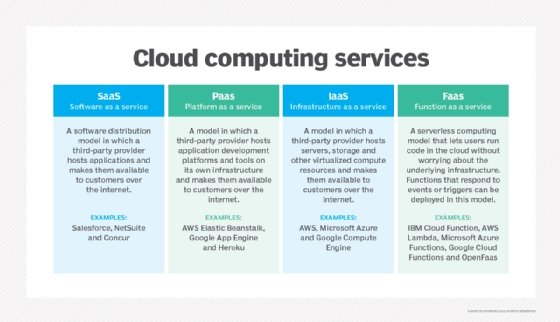Achieve Seamless Scalability With Cloud Provider
In the ever-evolving landscape of cloud services, achieving smooth scalability stands as a cornerstone for contemporary services looking for to stay competitive and adaptable. The capacity to effortlessly increase or contract sources in action to altering demands is a pivotal benefit in today's fast-paced electronic atmosphere. By mastering the art of scalable cloud services, organizations can not just optimize efficiency and enhance operations yet likewise lead the means for future development and development. The pursuit for seamless scalability with cloud services introduces a world of opportunities for those ready to embrace the transformative power of vibrant resource administration.
Advantages of Cloud Scalability
Cloud scalability offers companies the versatility to dynamically adjust resources based on demand, making certain optimal efficiency and expense performance. One key benefit is the capacity to scale resources up or down swiftly in feedback to rising and fall work. This agility makes it possible for organizations to satisfy changing client demands without over-provisioning sources, inevitably leading to cost savings. Scalability additionally improves efficiency by guaranteeing that systems can handle enhanced web traffic or workload without experiencing downtime or downturns. By successfully allocating resources, organizations can keep high levels of performance during peak times without unnecessary expenses during quieter periods. Additionally, cloud scalability advertises development and trial and error by permitting organizations to quickly evaluate new ideas and range them as required. This flexibility encourages a society of continual improvement and adjustment, enabling organizations to remain affordable in a quickly progressing market landscape. Eventually, the benefits of cloud scalability extend beyond price financial savings to include enhanced performance, agility, and innovation.
Secret Functions for Scaling
Efficient scaling in cloud services depends on vital functions that enable organizations to readjust resources dynamically based upon demand. One crucial function for scaling is elasticity, permitting resources to scale up or down in feedback to changing workloads. This guarantees that organizations can satisfy efficiency needs without over-provisioning sources. Another essential attribute is scalability, making it possible for systems to take care of increased workload by including resources effortlessly. This attribute is important for accommodating growth without compromising efficiency. Furthermore, automation plays a crucial role in scaling by automating the provisioning and de-provisioning of sources based on predefined plans. Automation lowers human intervention, boosts effectiveness, and makes certain rapid response to transforming needs. Surveillance and analytics tools are additionally important for scaling, giving understandings into source utilization, performance metrics, and possible bottlenecks. These devices make it possible for companies to make informed decisions and enhance source allotment for efficient scaling. On the whole, these key attributes collectively empower organizations to achieve smooth scalability in cloud services.
Executing Auto-Scaling Strategies
To effectively enhance resource appropriation and adjust to differing work, organizations should tactically apply auto-scaling strategies in their cloud solutions facilities. Auto-scaling allows systems to instantly adjust the variety of compute sources based on real-time need. There are various auto-scaling approaches that companies can use, such as anticipating scaling, which utilizes historic data to forecast future navigate to this website resource needs, and responsive scaling, which replies to existing work modifications.
Finest Practices for Scalability
For organizations intending to enhance their scalability in cloud solutions, implementing best techniques is essential for ideal performance and source management. One key finest practice is creating applications with a microservices design. This strategy breaks down applications right into smaller sized, independent services that can be released, updated, and scaled individually, enabling for better versatility and scalability.
Another important method is utilizing containerization modern technology, such as Docker or Kubernetes. Containers allow the product packaging of applications and their dependences into separated systems, making it easier to scale components independently and deploy them consistently across various settings.
Additionally, applying automated deployment and facilities as code (IaC) can improve scalability initiatives (linkdaddy cloud services). Automation tools like Terraform or Ansible assistance in provisioning and taking care of sources effectively, decreasing hands-on mistakes and enabling rapid scalability
Additionally, keeping an eye on performance metrics, establishing alerts, and carrying out normal capacity planning are crucial methods to guarantee proactive scalability administration. By adhering to these finest techniques, companies can accomplish smooth scalability in their cloud solutions while optimizing performance and resource utilization.
Surveillance Efficiency Metrics
When evaluating the efficiency of cloud services scalability, carefully this link keeping track of performance metrics is vital for making sure optimum performance and source appropriation. By constantly tracking crucial performance indicators (KPIs) such as reaction times, latency, source, and throughput usage, organizations can get useful insights into the wellness and efficiency of their cloud framework. Monitoring efficiency metrics permits the early detection of possible bottlenecks or issues that might influence scalability, allowing proactive actions to be required to address them before they rise.

Verdict
In verdict, attaining smooth scalability with cloud services is important for organizations to enhance efficiency, boost technology, and keep high performance degrees throughout peak times. By leveraging the benefits of cloud scalability, carrying out auto-scaling methods, making use of crucial features such as elasticity and automation, and adhering to ideal techniques like application style and performance surveillance, businesses can successfully scale their systems while making the most of resource usage and performance.
The mission for seamless scalability with cloud solutions reveals a world of possibilities for those eager to see this accept the transformative power of dynamic resource management.
Cloud scalability supplies organizations the adaptability to dynamically change resources based on need, making certain optimal efficiency and expense efficiency. One more essential attribute is scalability, making it possible for systems to manage increased work by including resources flawlessly.For organizations intending to enhance their scalability in cloud solutions, executing best practices is crucial for ideal performance and resource monitoring.When evaluating the effectiveness of cloud services scalability, carefully keeping track of efficiency metrics is essential for making certain optimal capability and resource allotment.